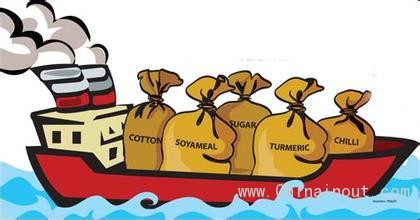
過去幾個月間,原油,、天然氣,、黃金、玉米等多種關鍵性大宗商品的價格連連跳水式下跌,,是繼2008年大宗商品崩盤之后最大跌幅,。然而,令人沮喪的是,,這種情況在2015年恐怕也難以好轉,。
原油持續(xù)低迷
業(yè)內人士一致認為2015年原油市場難有起色,。卓創(chuàng)資訊原油行業(yè)分析師朱春凱對國際商報記者表示,至明年一季度原油市場仍難徹底擺脫低迷局面,。
朱春凱表示“供應過剩仍將是原油市場最大的利空因素,。在沒有突發(fā)地緣危機的干擾下,預計未來三個月油價走勢將整體處在60~80美元,。”不僅石油輸出國信誓旦旦維穩(wěn)供應量,,美國頁巖資源也在沖擊市場。
盡管美國頁巖氣開發(fā)聲勢浩大,,但短期內仍很難替代石油,。未來全球經濟恢復增長,需求也會跟上來,,畢竟作為不可再生資源,,同時也是塑料、能源等廣泛需求的來源,,石油價格掉頭上來也是遲早的事,。
整體不被看好
事實上,不僅原油價格持續(xù)低迷,,2015年大宗商品價格走勢整體也不被看好,。
世界銀行發(fā)布的最新一期《大宗商品市場展望》指出,由于銅,、鐵礦石價格大幅下跌,,金屬價格預計將在2014年下降5.5%,與2013年類似,。此外,,由于美國產能擴大,化肥價格預計將在2014年下跌近12%,。
《展望》指出,,國際食品價格自2012年達到最高點后持續(xù)走低,并預計將持續(xù)至2015年,。其中玉米價格預計將下滑27%,,從2013年的260美元/噸降至2014年的190美元/噸,同時大米和小麥價格也將分別下降16%和9%,。
但該《展望》同樣指出,,大米、咖啡和可可或將與大多數大宗商品價格走勢相反,。由于一些亞洲供應商的收成惡化,,大米價格預計將會上漲;今年早些時候,咖啡價格飆升,,導致飲料指數較去年上升23%,未來這種情況很可能還將持續(xù),;此外,,由于科特迪瓦的供應問題,以及埃博拉疫情可能蔓延至西非的可可生產國,,可可價格預計也將會大幅上漲,。(中國進出口網)
Over the past few months, the price of crude oil, natural gas, gold, corn and other key commodities fell again and again, the largest decline following the 2008 commodity crash. However, frustratingly, it’s also difficult to improve in 2015.
Crude oil remains in the doldrums
Insiders agreed that the 2015 oil market would be stuck in a rut. Zhu Chunkai, a crude oil industry analyst, told a reporter from International Business Daily, until the first quarter of next year oil market would be still stuck in a rut.
Zhu Chunkai said that supply surplus would still be the biggest negative factor in the crude oil market. In the next three months, the oil price would be $60-80 without unexpected interference geopolitical crisis." Not only OPEC insisted to supply oil steadily, the US shale resources were also hitting the market.
Despite the massive US shale gas development, it was still difficult to replac oil in the short term. With the recovery and development of the global economy, demand would also increase. After all, as a non-renewable resource, and the source of a wide range of plastics and energy, oil is very important and its price would turn up sooner or later. "
Overall not optimistic
In fact, not only crude oil prices would continue to slump in 2015, but the overall commodity price trend was not to be optimistic.
The World Bank released the latest issue of "commodity market outlook," which pointed out that as copper and iron ore price fell sharply, metal price was expected to decrease by 5.5 percent in 2014, similar to 2013. In addition, because the United States expanded production capacity, fertilizer price was expected to fall by nearly 12 percent in 2014.
It pointed out that international food prices continued to decline and were expected to continue until 2015 since they reached its highest point in 2012. Among them Maize prices were expected to decline by 27% from 2013 $260 / ton to 2014 $190 / ton, while the price of rice and wheat also fell by 16% and 9%, respectively.
But it also pointed out, the price trend of rice, coffee and cocoa may be in opposite to most commodity price trend. Since some Asian suppliers harvest was deteriorated, rice prices were expected to rise; earlier this year, coffee prices soared, leading beverage index rising by 23% over last year, in the future, this situation was likely to continue; in addition, due to the supply of Côte d'Ivoire supply issues and cocoa-producing west Africa countries possibly affected by Ebola epidemic, cocoa prices were also expected to rise sharply.











